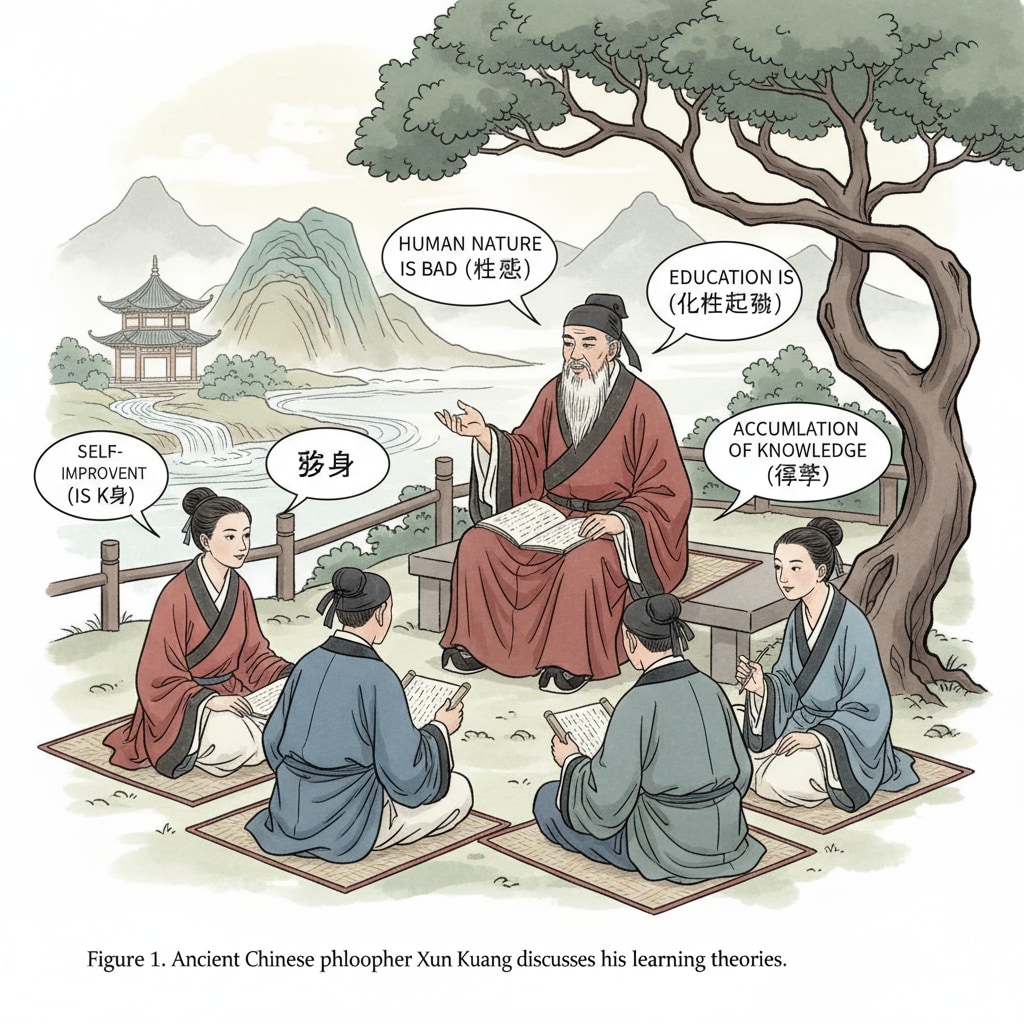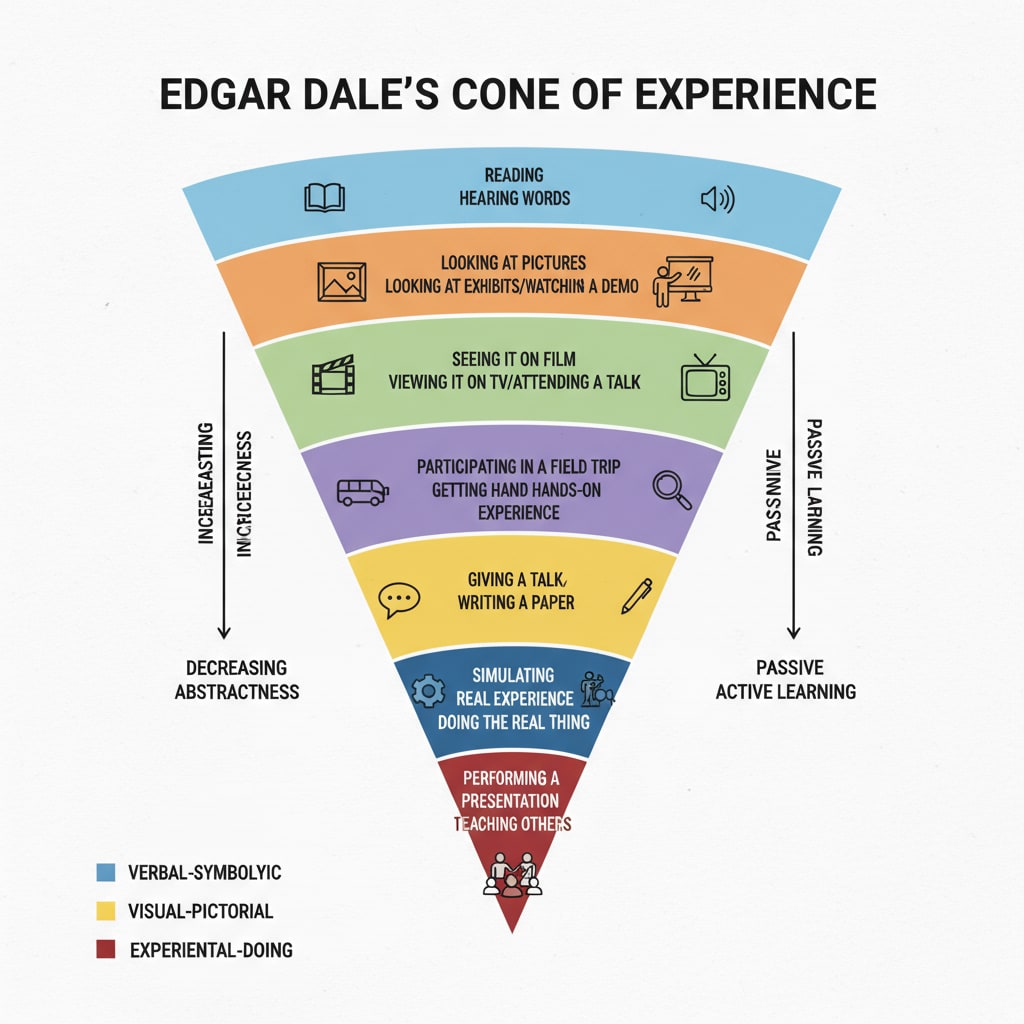Learning theories, Xun Kuang, Cone of Experience, and experiential learning are concepts that have long intrigued educators and learners alike. Throughout history, different thinkers have proposed various ways of understanding how we learn, and two such important perspectives are those of Xun Kuang and Edgar Dale. Xun Kuang, an ancient Chinese philosopher, had his own ideas about the levels of learning, while Dale introduced the “Cone of Experience” model. These theories shed light on the significance of experiential learning, which emphasizes learning by doing.
The Wisdom of Xun Kuang on Learning
Xun Kuang believed that learning is a hierarchical process. He emphasized that true learning goes beyond mere memorization. For example, in his view, simply reading about a concept is at a relatively shallow level. True understanding comes when one can internalize the knowledge and apply it in real-life situations. This is similar to the modern idea of experiential learning. Xun Kuang’s teachings suggest that learners should strive to move from passive reception of information to active engagement with it. Xun Kuang on Wikipedia

The Cone of Experience Model
Edgar Dale’s “Cone of Experience” model provides a visual representation of different types of learning experiences and their effectiveness. At the bottom of the cone are the most concrete and hands-on experiences, such as direct purposeful experiences. These are the experiences where learners are actively involved in doing something. As we move up the cone, the experiences become more abstract, like listening to a lecture. Research has shown that the learning experiences at the bottom of the cone, those that involve “learning by doing,” tend to result in deeper understanding and better retention of knowledge. Cone of Experience on Britannica

To further illustrate the power of experiential learning, I would like to share a personal VR experience. I once participated in a VR educational program about history. Instead of just reading about historical events, I was immersed in virtual recreations of those times. I could interact with virtual characters, explore historical settings, and actively engage with the content. This multi-sensory experience made the learning much more vivid and memorable compared to traditional learning methods.
In conclusion, whether we look at the wisdom of Xun Kuang from ancient China or the modern “Cone of Experience” model, it is clear that experiential learning, or learning by doing, is a powerful approach. It encourages learners to actively participate, engage multiple senses, and gain a deeper understanding of the subject matter. Educators should take these learning theories into account and design educational experiences that promote hands-on learning for better educational outcomes.
Readability guidance: By using short paragraphs and lists, we can effectively summarize key points. Each H2 section can include a list to make the content more organized. Controlling the proportion of passive voice and long sentences helps maintain readability. Adding transition words like “however,” “therefore,” “in addition,” “for example,” and “as a result” throughout the article enhances the flow of ideas.


